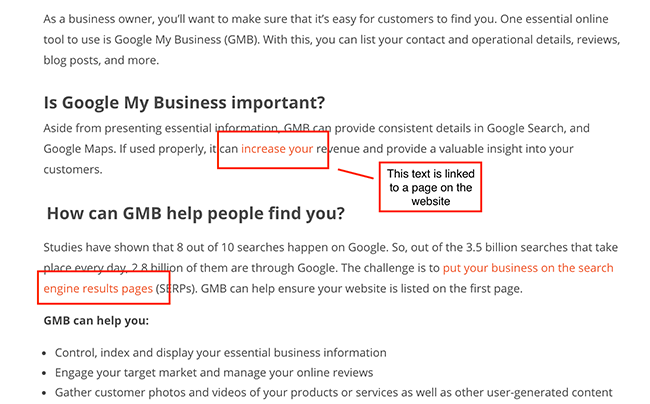How Topics Can Help Recruiters Get Higher Search Rankings
Keywords plays a vital role in search engine optimisation. Not only do they make it easier for your audience to find you online, but they also help you create relevant web content. This is why it’s essential to start your SEO campaign with keyword research.
But if you ask our recruitment SEO experts here at Recruitment Traffic, they will tell you that keywords are not everything. While they are crucial to achieving better online visibility, you should not focus solely on them if you want to attract the attention of more candidates and employers. We believe that you should also focus on topics when developing your SEO and content strategy.
Contents
How Are Topics Different from Keywords?
While often used interchangeably, topics and keywords are different from each other. Understanding the significant difference between the two is essential to ranking well on Google.
In SEO, keywords are simple words or complex phrases you insert in your web content or pages to help people find your website through search engines. They are also the words people enter into search engines to find specific information or sites.
Topics, on the other hand, consist of several relevant keywords and search queries used in the various stages of a user’s journey. If keywords offer suggestions on relevant topics you can write about, then topics help you identify the keywords to use in your content.
Tips on Using Topics to Improve Your Search Rankings
A few years ago, Google identified websites to show on search result pages based on the keywords people use in their search queries. Now, with the recent updates on its search algorithms, Google relies on a website’s contextual meaning to provide searchers with the information they need. This shows how important topics are in today’s SEO.
If you want to get better search rankings, here’s what you should do:
1. Determine the topics your audience likes
Follow the lead of recruitment SEO experts by starting your campaign with a solid SEO strategy. The first thing you need to do is to identify recruitment subjects or issues that might interest your audience. Once you have a long list of recruitment topics, you can now conduct standard keyword research.
While researching your main keywords should be your priority, you should also identify search terms that are semantically related to your topics. To do this, determine the sub-topics that may be related to the one you want to create content for. Then, think of the questions that your audience might ask regarding these sub-topics. Once you have an exhaustive list, identify the keywords that your audience might use when asking these questions.
2. Check out the competition
At this point, you should have an idea of the types of content you’ll need for a specific topic. Next is to pinpoint who is ranking well for your chosen topic. If another recruiter is doing well for the topic you want to target, there’s a huge chance they are using an excellent strategy.
Understand your competitor’s strategy well by determining how they structure and deliver their content. This should help you come up with a useful plan when creating your content or working on your website.
A quick warning, though. You should never duplicate what your competitors are doing. Plagiarising your competitors’ content can result in a Google penalty. Instead, obtain inspirations from your competitors and try to surpass them.
3. Be familiar with search intent
Just recently, Google launched the BERT update, which made it possible for machines to understand language the way humans do. With this update, it has become more crucial to understand what motivates people to perform a specific search query online. By understanding their motivation, identifying the type of content you need to create or revamp to satisfy your audience’s needs will be much easier.
You can use a wide range of SEO tools to understand your audience’s search intent. However, simply searching on Google while in incognito mode can help you obtain good results.
When you look up a specific topic using a single-word query, you’ll see that educational content made up most of the search results. For example, when you type in “recruitment” on Google, you’ll notice that the top search results point to links that answer the following questions:
- What is recruitment?
- What are the stages of the recruitment process?
- What are the types of recruitment?
These questions should clue you in on what types of content you should create when targeting the topic “recruitment.”
4. Take your site structure into account
Creating valuable content pieces is not enough. You should also structure them in a way that Google’s search bots can easily crawl them. This will tell Google that you’re a trusted authority when it comes to jobs and recruitment.
You can do this by using breadcrumbs. Breadcrumbs are small navigational aids recruitment SEO experts like us here at Recruitment Traffic used to help web visitors identify their exact location on a specific website. They help improve overall user experience and, more importantly, they help search bots understand how to get from Point A of your website to Point B.
Focus on Topics to Get Better Google Rankings
Keywords are essential to SEO. However, you should give topics some due attention, too. It is because they enable you to provide job seekers and employers with more valuable and useful content. This, in turn, aids your Google ranking and helps you enjoy better online visibility.
If you need help getting better search rankings, we’re happy to assist you. Our SEO experts here at Recruitment Traffic have the skills and experience to help you leverage the power of Google to give your recruitment business a boost. Contact us today.
Drive Your Recruitment Business Towards The Best Results.
Talk to us about how we can help.








